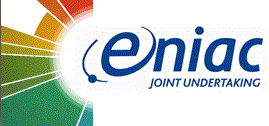CSSL
ABSTRACT
The main objective of CSSL project (Consumering Solid State Lighting) is to develop a light bulb in solid form that meets the expectations of consumers in terms of price, lighting, and other features over the current technology based on LED (Light-Emitting Diodes).
Regulations in Europe will ban the 100W incandescent clear glass lamp starting in September 2009, and will progressively ban all inefficient incandescent lamps by 2012 and all other incandescent lamps by 2016. The Energy Information and Security Act of 2007 began the process of restricting the sale of inefficient lamps in the US. By 2012, with a few exceptions, inefficient incandescent lamps cannot be sold any more.
The currently available CFL technology is only regarded as a transition between incandescent and LED light sources. CFL has unsatisfactory light-quality, limited or expensive dim-ability and is not a true replacement for reflector lamps. Many have placed their hopes of finding a super-efficient bulb on solid state lighting. Therefore there are great market opportunities for LED replacement lamps.
LED (light-emitting diodes) lamps is a fast emerging technology, whose efficacy competes with that of Compact Fluorescent Lamps (CFLs). Yet, LEDs for room illumination are today only in the first phase of commercialization, and rare are those that fulfil all the expectations of the consumers in terms of light output and other functionalities. In the long run, LEDs are to become the true alternative to CFL and could potentially lead to energy savings of 80% and more of the GLS energy consumption.
Although the market for LED replacement lamps is still in its early stages of development, the lamp revenues are forecast to grow at a CAGR (compound annual growth rate) of 107% through 2013. LED Retrofit lamps are right now starting to penetrate the professional market in general lighting as well as down lighting applications, for instance, the commercial and industrial segments are embracing LEDs to control costs and save energy; the LED lamps are used for directed light applications, in hard-to-reach places and where the cost of replacement is very high etc. (Strategies Unlimited, 18th June, 2009)
Project Budget: 26’953’143 €
LEITAT Budget: 450’926 €
Financial Framework: JTI ENIAC
Contract number: 120219
Start Date: 01/01/2010
End Date: 31/05/2014
Contact Manager: M. Domper

